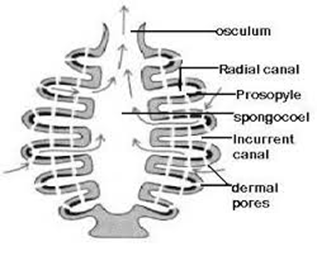Life cycleof Angiosperm Overview : Biology Blog
Angiosperms
 What is Angiosperm -
What is Angiosperm -
Angiosperms ( flowering plants ) are the most advanced type of land plants having almost different sizes and shapes of a plant, it can be either small or it can be large also like Wolffia ( smaller ) and eucalyptus (large). The ovule and the pollen grain are enclosed in a flower and the seed is enclosed in the fruit of these plants.
If we talk about its usefulness, then it does not only provide food but also provides medicines, fodder, fuel, paper, and several other commercial products.
Life Cycle of Angiosperm - The development of these plant is just like an animal that begins from a fertilized egg (sexual reproduction ) and converts into an embryo having a polarised organization, for example, its apical portion develop to from shoot, middle one into the stem and basal portion form root of the plant.
 |
| L.S. Of Flower |
Sexual reproduction consists of two ways - sporophytic ( microsporogenesis ) and gametophytic (megasporogenesis ). Sporophytes contain a diploid phase of a life cycle, the generation starts when the sperm nucleus fuse with the egg nucleus and another one fuses with the polar nuclei and form triploid endosperm and continue to form seed, seedling, mature plants and flowers. On the other hand, the gametophyte is having a very short haploid phase of the life cycle. Due to this the life cycle of Angiosperms is haplodiplontic type.
Sporophytic (Microsporogenesis ) process - It is the process of formation of microspore with the help of pollen mother cells by the process of meiosis. This microspore further gives rise to the male gamete.
The whole story of this begins with the flowering male reproductive part that is Stamen. This Stamen is generally consisting of two parts - Anther and the Filament. The size, color, and length of the anther can vary in different flowering plants.The anther is generally having a bilobed structure having two thecae ( Dithecous ). If we cut the anther transversely we found that the anther is having a tetragonal structure consisting of four microsporangia located in the corner of each lobe of the anther. After developing further this microsporangia give rise to pollen sac in which pollen grains are filled.
Mature Anther wall - The typical microsporangium is looked like circular in the structure having four wall layers - the epidermis, endothecium, middle layer, and the tapetum. The outer three-layer protects the microsporangium and the last one, the innermost Tapetum nourishes the developing pollen grains.
After some time some cells arrange in the center of microsporangium and form Sporogenous Tissue .
We will cover the other half in our next blog post, please subscribe us to not miss any updates from biology blog
.



Comments
Post a Comment